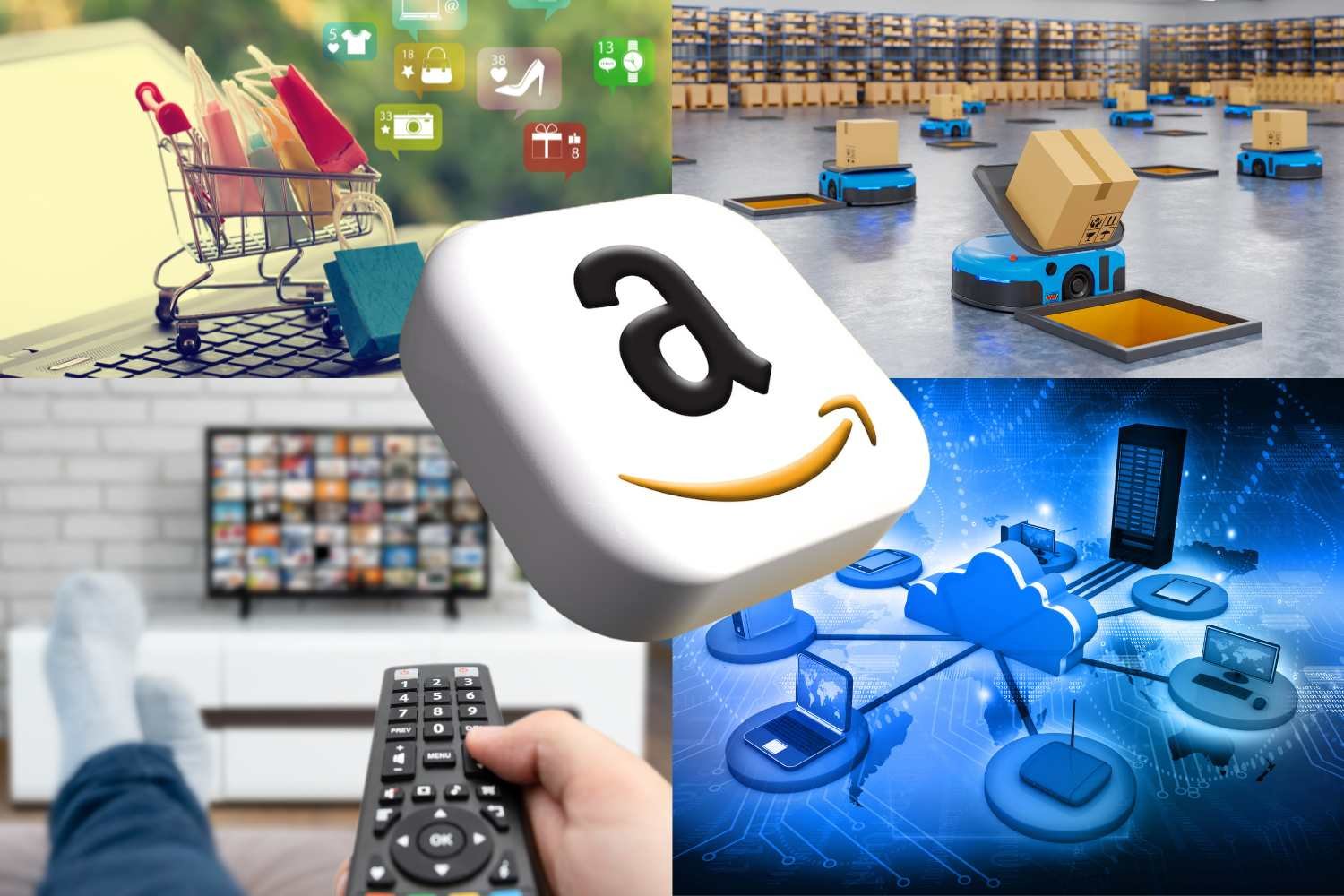How Amazon is Diversifying Its Business Portfolio
- Home
- How Amazon is Diversifying Its Business Portfolio

How Amazon is Diversifying Its Business Portfolio
I. Introduction
Amazon, the e-commerce giant founded by Jeff Bezos in 1994, has evolved from being a simple online bookstore to a global conglomerate. While its core business model revolves around e-commerce, Amazon has actively pursued diversification into various industries and technologies to ensure its long-term success and sustainability.
Diversification is crucial in business as it allows companies to spread their risk, tap into new markets, and leverage their existing resources and capabilities. In this article, we will explore how Amazon has strategically diversified its business portfolio to stay ahead of its competitors and drive continued growth.
II. Expansion into New Industries
A. Amazon Web Services (AWS)
One of Amazon’s most successful ventures into new industries is Amazon Web Services (AWS). Launched in 2006, AWS provides on-demand cloud computing services to businesses and individuals. It has become a significant player in the global cloud services market, contributing significantly to Amazon’s revenue and profitability.
AWS offers a wide range of services, including computing power, storage, and databases, as well as machine learning and artificial intelligence capabilities. Its scalability and cost-effectiveness have attracted millions of customers, from startups to enterprise-level organizations.
B. Amazon Prime Video
In addition to its e-commerce dominance, Amazon recognized the growing popularity of streaming services and entered the industry with Amazon Prime Video. With original content production studios worldwide, Amazon Prime Video competes with major streaming platforms like Netflix and Hulu.
Amazon’s investment in original programming, such as critically acclaimed shows like “The Marvelous Mrs. Maisel” and “Fleabag,” has garnered both critical acclaim and a loyal subscriber base. The service’s global expansion has allowed it to reach audiences around the world, further diversifying Amazon’s revenue streams.
C. Amazon Pharmacy
Expanding its reach into the healthcare industry, Amazon acquired online pharmacy PillPack in 2018 and launched Amazon Pharmacy in 2020. Leveraging its existing logistics infrastructure and customer trust, Amazon Pharmacy provides convenient prescription fulfillment and delivery services.
With its entry into healthcare, Amazon aims to disrupt the traditional pharmacy model and offer customers a seamless and tech-driven experience. This diversification into healthcare not only expands Amazon’s consumer base but also positions the company as a broader healthcare provider.
III. Innovations and Acquisitions
A. Amazon Robotics
To improve its operational efficiency and delivery processes, Amazon has heavily invested in automation and robotics. With its acquisition of Kiva Systems in 2012, Amazon now operates a growing fleet of robots in its fulfillment centers.
By implementing automated systems, Amazon has significantly increased its order processing capabilities, reduced delivery times, and improved overall customer satisfaction. Automation also allows the company to handle peak demand periods more efficiently, such as during major shopping events like Prime Day.
B. Whole Foods Market
In 2017, Amazon made a significant move into the grocery industry by acquiring Whole Foods Market. This acquisition not only gave Amazon access to established brick-and-mortar stores but also strengthened its grocery delivery capabilities and supply chain network.
Incorporating Whole Foods into its operations, Amazon expanded its presence in the grocery industry and introduced innovative concepts like cashier-less checkout through its Amazon Go stores, bridging the gap between online and offline retail experiences.
C. Amazon Go Stores
Amazon Go stores take the concept of cashier-less, automated shopping to the next level. These stores utilize advanced technologies, including computer vision, sensor fusion, and deep learning algorithms, to enable customers to walk in, grab what they need, and walk out without having to go through a traditional checkout process.
With several Amazon Go stores already operating in select cities, Amazon plans to expand this concept globally. This venture into physical retail showcases Amazon’s ability to innovate and diversify beyond its online marketplace.
IV. Ventures into Technology
A. Amazon Alexa and Echo Devices
Amazon’s foray into voice assistant technology with Alexa and its accompanying Echo devices has been a game-changer. Alexa, powered by artificial intelligence and machine learning algorithms, has become one of the most popular voice assistants, found not only in Amazon’s smart speakers but also integrated into various smart home devices, cars, and even smartphones.
This tech innovation has allowed Amazon to penetrate consumers’ homes, creating a seamless and interconnected ecosystem. With Alexa, users can perform a wide range of tasks, from controlling their smart devices to ordering products from Amazon, further cementing Amazon’s place in people’s lives.
B. Amazon Luna
In another technological venture, Amazon recently entered the gaming industry with Amazon Luna. Luna is a cloud gaming platform that allows users to stream video games directly to their devices, eliminating the need for expensive gaming hardware.
By leveraging its vast cloud infrastructure, Amazon aims to disrupt the traditional gaming industry by offering seamless gameplay experiences across different devices. With a subscription-based model, users have access to a library of games without the need to purchase individual titles.
V. Conclusion
Amazon’s strategic diversification into various industries and technologies has propelled its growth and helped it maintain a competitive edge. By expanding into new industries like cloud services (AWS), streaming (Amazon Prime Video), and healthcare (Amazon Pharmacy), Amazon has tapped into lucrative markets, broadened its customer base, and diversified its revenue streams.
Additionally, Amazon’s innovations and acquisitions, such as robotics (Amazon Robotics), grocery (Whole Foods Market), and cashier-less stores (Amazon Go), have allowed the company to optimize its operations, improve customer experiences, and bridge the gap between online and offline retail.
Furthermore, ventures into technologies like voice assistants (Amazon Alexa) and cloud gaming (Amazon Luna) have solidified Amazon’s position as a leader in the tech industry.
Looking ahead, Amazon’s potential future ventures could involve expanding its presence in emerging technologies like artificial intelligence, virtual reality, or even space exploration through its subsidiary Blue Origin. With its customer-centric approach and relentless focus on innovation, Amazon’s diversification efforts will likely continue, ensuring its continued success and growth in the ever-evolving business landscape.
- Share
